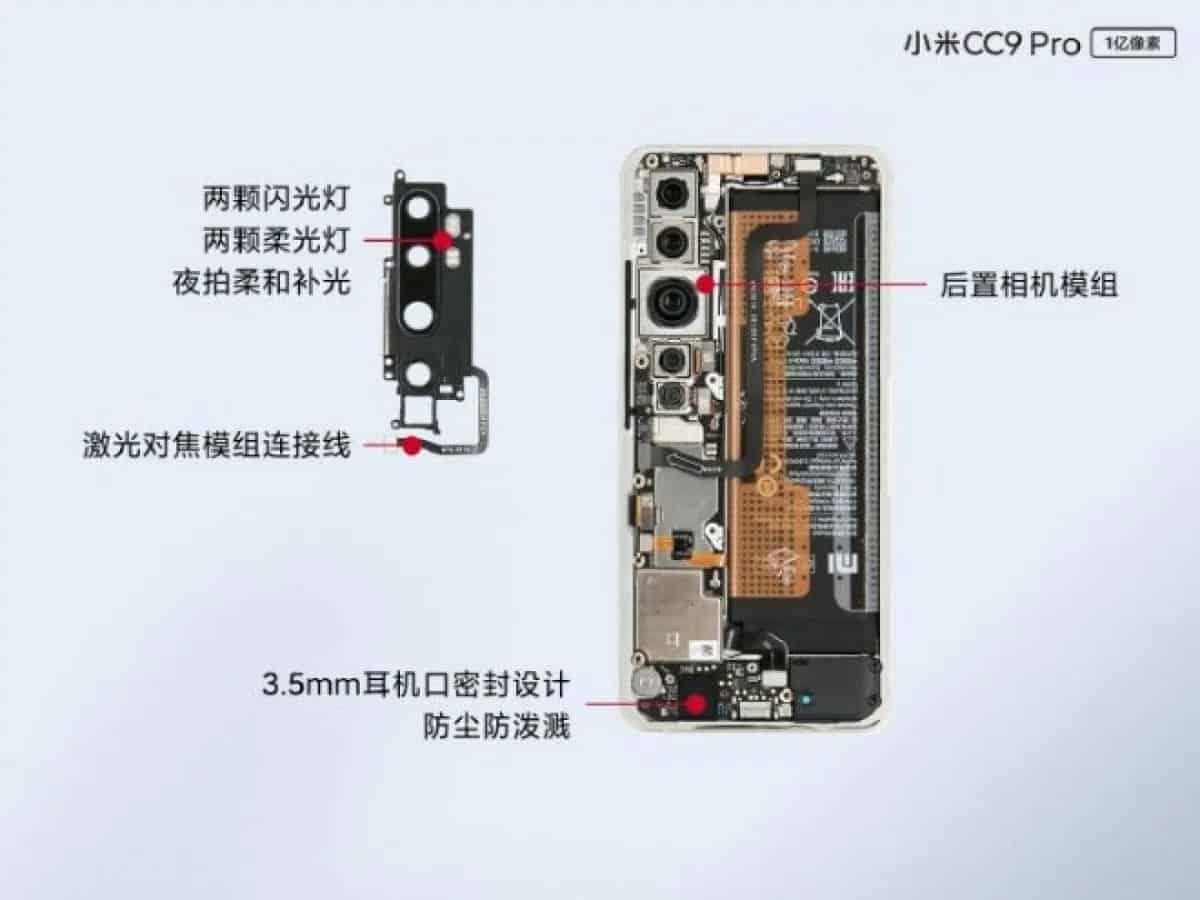Xiaomi recently launched a premium mid-range Mi CC smartphone, the Mi CC9 Pro. The same smartphone has been made available in global markets as the Mi Note 10. The main highlights of smartphones are five camera sensors, a 5,260mAh battery, and a fantastic speaker. Putting all this into a slim body was a challenge as the disassembly video reveals.
Disassembled the Mi CC9 Pro! What secrets does it keep?
As the rear glass panel is removed, we can see that there are some layers of components that include the NFC antenna, a chip to spread the chipset heat and additional coverage for the cameras.
Included in this coverage is the LED flash and laser autofocus system, along with an ambient light sensor to adjust the camera’s color temperature. Then there’s a Penta camera setup and, as we can see, the 108-megapixel sensor is quite large and this module is a custom version of Samsung’s ISOCELL HMX sensor.
Primeira The first lens on the smartphone’s front camera system is a 5-megapixel super-telephoto, 4-axis optical stabilization assisted telephoto lens that supports 5x optical zoom, 10x hybrid zoom, and 50x hybrid zoom. Following is a sensor for 12-megapixel portrait photographs. The third sensor is the main one. Thus, it has 108 megapixels and is from Samsung, with f / 1.7 aperture and 4-axis optical stabilization. Next up is the ultra-wide-angle 20 megapixel with a 117-degree field of view. The fifth is a 2-megapixel macro lens with a focal length of 1.5 cm.
Finally, coming to the motherboard, we can see the Qualcomm Snapdragon 730G processor, along with LPDDR4X memory, UFS 2.1 storage and several other chips, including the one responsible for the 30W fast charge.
Interestingly, Xiaomi was able to install a 5,260mAh battery in the smartphone without resorting to the L-shaped battery as other manufacturers use. For those who don’t know, Apple used a 4,000mAh L-shaped battery for the iPhone 11 Pro Max.
However, below the battery is the speaker and the 3.5mm headphone output. However, with all of these components, there is no room for the traditional on-screen fingerprint sensor. That said, the company has chosen to integrate an ultra-thin reader that is only 0.3 mm thick and made possible by a microlens with micro-collimation technology.


